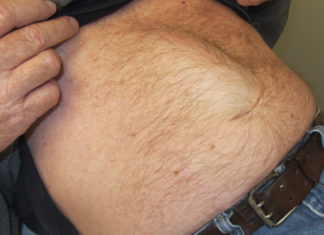Teeth are extremely precious, but not many take sufficient care of their pearlies, leading to tooth decay, infection, and even the loss of a tooth.
The process by which the decay and cavities occur is pretty simple. If the teeth are not cleaned properly, bacteria remain hidden in the corners. These bacteria produce acids that make the layer of enamel, protecting the teeth softly.
Gradually, a cavity or pit is formed on the surface of the teeth, which leads to more bacteria and food particles making their way inside the affected tooth. Such cavities must be treated without delay, or it would lead to the loss of a tooth.
Why do cavities occur?
Tooth decay is usually caused by the consumption of cold beverages and sugary, sticky food items. The more sugar you consume, the more acids are produced.
The sugar further joins forces with a plaque and attacks the tough enamel on the tooth. The consumption of sugary foods leads to the production of this acid within 20 minutes, causing damage to the teeth.
- If you want to keep tooth decay and cavities at bay stay away from starchy foods like bread, candy, honey, cereal, and milk.
- Even if your dietician advises frequent meals or snacking throughout the day, remember that irrespective of what you eat, acids will be produced in the teeth. So, try brushing your teeth after every meal. This will keep the mouth feeling fresh and remove the plaque building.
- If the gums are receding then, know that the teeth are not getting enough protection and plaque can form near the roots.
What are the Symptoms of cavities?
Cavities in the initial stages do not show any symptoms—the symptoms of a cavity start when the pits get larger. If you wonder how to tell if you have cavities, check out this list of symptoms.
- Feeling Toothache without any reason
- Feeling Tooth sensitivity
- Experiencing Pain in the teeth while consuming anything too cold or hot
- Visible dark pits in the teeth
- The teeth surface is stained black, brown or even white
- You will feel pain in the teeth while biting food and chewing
- Bad breath in the mouth is common during the morning. But if the same has been created by cavities then the bad breadth is unlikely to go away with flossing and brushing. It is one of the sure shots signs of how to know if you have a cavity
- You will also have a bad taste in your mouth throughout the day
Now, it will be difficult for anyone to tell what does a cavity feel like. But considering that it is a pit in the tooth, you can always run your tongue along with it when it is not hurting and check out the jagged edges.
How to treat cavities?
Keeping in touch with your dentist is the most important thing to do because they can then tell how critical the condition of your cavities is or if they have formed at all.
If they have, filling up the pits is the next best alternative to having the tooth removed altogether.
In case you already have them, then the dentist will check for signs of damage. Often the fillings become weak and even break down. This allows the plaque to get into the teeth.
What is the filling process?
The filling process is advised when the tooth has formed cavities or pits in the tooth. To explain, the dentist will remove the decayed material from your teeth and fill the space with some other material.
The filling helps the tooth to remain in shape. You will be given a local anaesthetic before your tooth is cleaned and the contents removed.
If the decay has spread deep inside the tooth and reached the pulp, which contains the nerves and blood, the process is completed using the root canal technique.
The tooth sometimes must also be removed if it has decayed completely, and the filling or root canal method will not serve the purpose.
What are Complications with cavities before filling process?
Once a cavity has been detected, you should follow the dentist’s advice and get it treated at the earliest. Unless the cavity filling process is completed, the following complications can take place.
- Feeling Tooth ache which hampers your daily routine
- Having Tooth abscess can sometimes lead to severe infections
- Swelling accompanied by puss around the teeth
- Chewing problems which leads to nutritional problems
- Facing Broken teeth
- Change in the teeth position if there is tooth loss
What kinds of material are used for dental filling?
Cavities are filled using different types of materials which porcelain, gold, composite resin, and amalgam.
The dentist determines which one to use for cavity filling depending on the amount of damage in the tooth. Also, it will have to be seen if you are suffering from any allergies and how many cavities filling costs you can afford.
Following are the types of filling material:
- Gold: Dental fillings using this precious material last quite long and are often opted for by adults. Gum tissues tolerate gold well and many consider it to be the best option. Gold fillings are quite expensive.
- Amalgam: Amalgam fillings are dark in colour and easily noticeable. This is why it is not used in the front teeth at all. This material is not expensive.
- Composite resins: These match with the teeth colour and offer a natural appearance. Composite resins can get tainted by the constant use of coffee or tea and tend to get chipped easily.
- Porcelain: Porcelain fillings have to be made in laboratories and cover almost the whole of the tooth. It is quite costly and also as expensive as gold.
Cavity filling procedure
The entire dental cavity filling process takes about an hour or so. So, if you have been wondering how long it takes to fill a cavity, be prepared to sit on the dentist’s chair for an hour or more.
Before starting the process, the dentist will inform you about the entire procedure in a step by step procedure. An x-ray will be performed to determine the depth of the decay.
The method will start with the dentist numbing the tooth which is being filled up. The decayed part of the tooth will be removed, and the entire area will be sterilized.
The hole will then be filled up with whatever material that the dentist advises. The tooth surface will then be buffed up and the procedure completed. So, now you know how do they fill a cavity. It will be sometime before the anaesthesia wears off.
The extent of the filling depends on the kind of material used and the amount of care you take. Once the anaesthesia is off, you will feel a bit of pain because the dentist had been scraping the decayed parts. But if the pain is more than usual, then
Conclusion
Cavities can be treated using fillings, but they are at best avoided. Brush twice a day, and don’t put food of extreme temperature in your mouth.
Using a fluoride paste is also essential for maintaining your teeth and keeping them at bay from cavities. Keep in touch with the dentist. Regular visits help to maintain a tab on the condition of the teeth and prevent infections and plaque.






